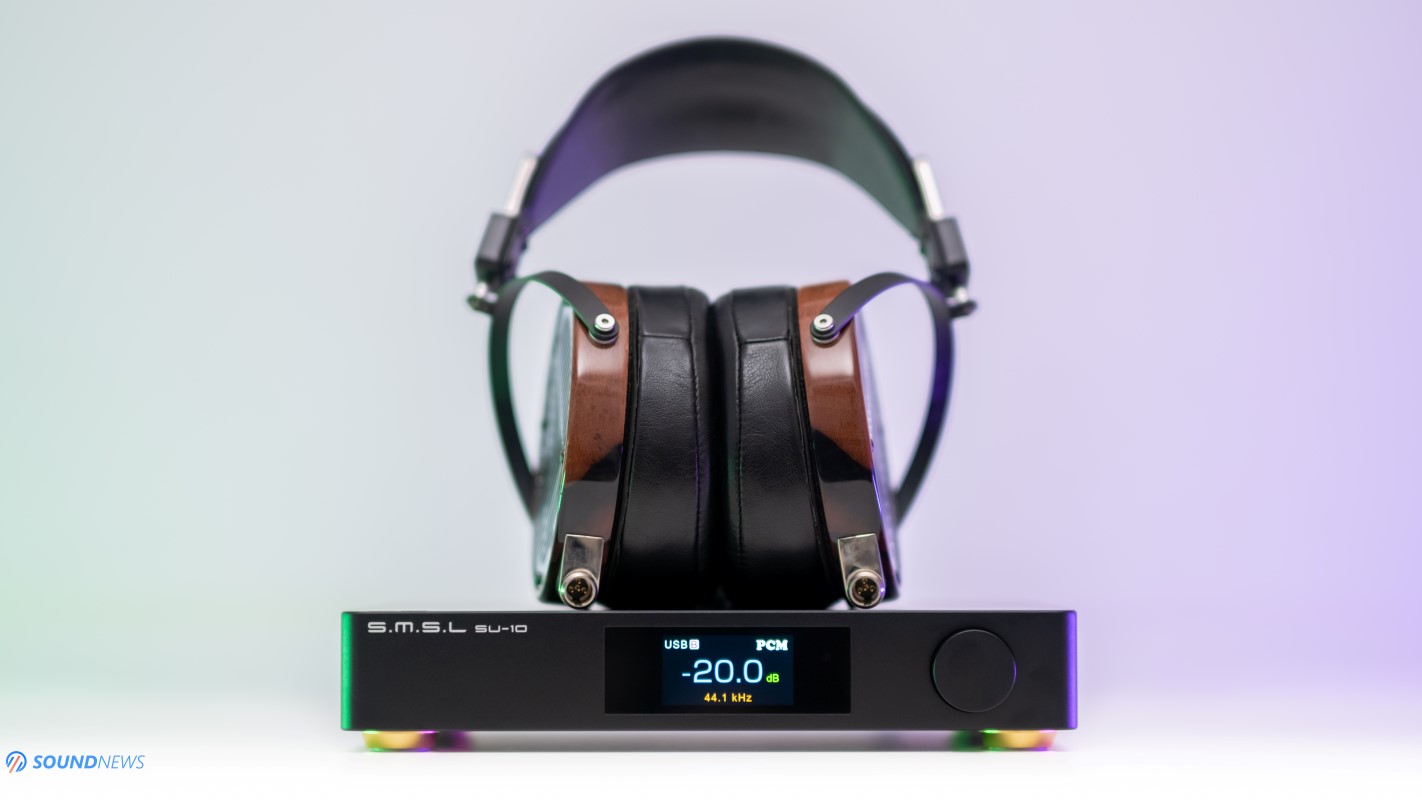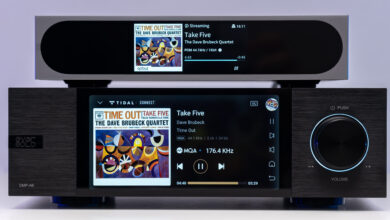
My Video Review:
While SMSL Audio always resonated with affordable audio that anybody could enjoy without wandering into the four-figure territory, a time came in trying a slice of that fat and delicious pie that’s called High-End Audio. Everything changed when SMSL revealed their VMV line a few years ago, inspiring all other DAC makers to follow the same course.
Exactly a year ago I posted my SMSL VMV D1SE review, which at that time was the coolest ESS-Sabre DAC that SMSL had to offer. It had everything it needed to succeed, starting with a nice-looking case, top-notch build quality and finishing with a great component selection and outstanding sonics to match its lineage. For almost a year, that was The DAC to beat below one grand and ah, you nasty SMSL…you did it again with the release of the SU-10! While this is their highest performing DAC from the SU line, I feel that it should be part of their VMV (High-End) line, as in many ways, SU-10 seems like a true successor to the VMV D1SE.
I’m greeted with a symmetrical looking case, which isn’t a common sight if we’re talking about SMSL Audio. I see nicer metal feet…and Odin almighty, the component selection feels unreal, even for SMSL. I was talking to a good friend of mine about digital audio and how far everything advanced in less than a decade and we both agreed that everything that has to do with power supplies and analog stages should be as overkill as possible, especially in a high-end D/A converter. Go Big or go home, that’s the philosophy. Of course, we started talking about separate transformers for the digital and analog sections and about overkill output stages, ideally made from discrete components that wouldn’t limit dynamics in any way, as no matter how accurate the D to A conversion really is, the soul and the flow of the music is always given by the last stage. When I popped the hood of the unit that I will be testing today, I couldn’t believe my eyes, as SMSL did exactly what I wanted D1SE to be in the first place. Take everything I said about D1SE in its dedicated article, multiple that by two and you’ll get a portion of what SU-10 really is. Everything went much higher, there are two ESS flagship DAC chips inside, sixteen channels were paralleled together for the lowest possible distortion and craziest dynamic range. Not one but two audio-grade Noratel transformers are powering it and wait for this: Twenty-one OPA1612 operational amplifiers are pushing the voltage for the most overkill analog stage I’ve seen on a DAC of this size, all while costing $899 in the US or €999 in the EU.
Even without listening to the damn thing, every cell in my body felt excited for what’s to come. So far, I can’t say a single bad word about the SU-10, as everything’s up there if not higher versus its direct competition. Let’s go deep and learn everything there is to know about the newest SU-10 DAC of SMSL.
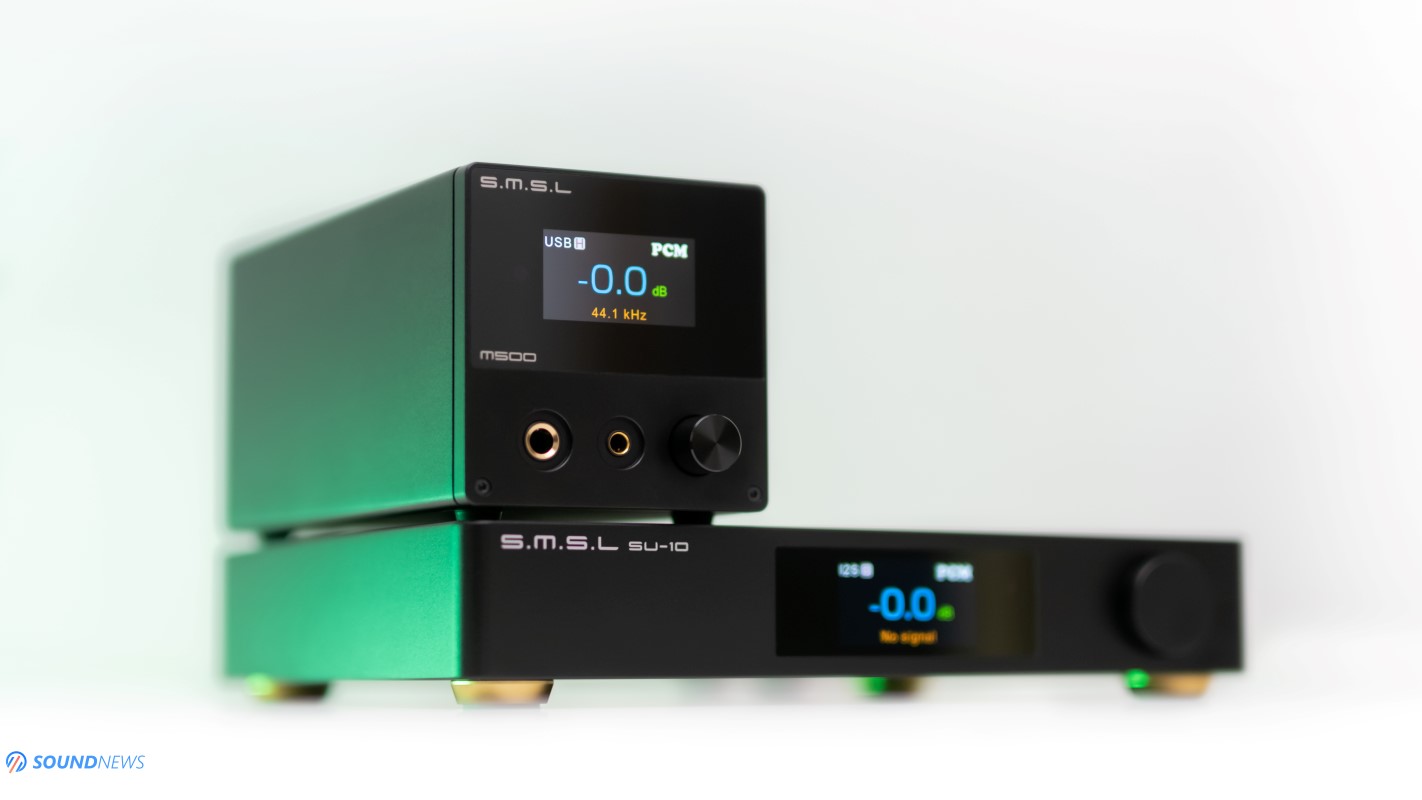
Design & Build Quality
If you followed a few SMSL DAC reviews around here, then you already know that I complained aplenty about their unusual looking cases, asymmetrical displays and just plain weird design decisions that I couldn’t embrace. However, their VMV D1SE and D2 completely changed my views, as these looked and performed as proper DACs at their respective price points. D1SE was so close to being perfect, but I slightly disliked its plastic volume knob, its tempered glass cover expanding to the right side of the body and of course those pointy metal feet that were leaving tiny holes on my table. Now take everything I’ve complained about D1SE and replace my complaints with words of praise. We got a metallic volume knob that offers a decent physical resistance, the glass cover is no longer expanding and sits exactly in the middle and we are no longer getting pointy feet, exchanging metallic inlays with soft rubber pads that should absorb tiny vibrations coming from within its electronics.
Some of you aren’t that crazy about looks and perfect symmetry, but if you checked some of my articles and photos, then you know that I’m obsessed with that. For me that’s very important, especially when talking about flagship devices and I’m not sure if SMSL hired new designers, but it looks that way and I’m liking what I’m seeing so far.
It uses a fully CNC-ed case, machined from a single block of aluminum. There aren’t plates attached to its front, sides or back, as everything was carved from a single piece of aluminum, which is so pleasant to the eyes and fingers.
SMSL went with a matte-black paint, discarding all other options, they powder coated it with a fine grain paint that should save it against accidental scratches. Luckily, Hi-Res Audio and Hi-Res Wireless weren’t laser engraved to its body, as I’m usually peeling off stickers for a cleaner look and I can do that on SU-10. It looks like SMSL went with the same ~2” LCD screen, protected by a layer of tempered glass. I find it bright enough to be used in the living room and it’s easy to read thanks to a bigger font.
I can’t say a single bad word about its build quality and looks. It’s well-made, it’s built at much higher standards than ever before, it’s small and cute and at ~1.86 kilos (~4 lbs) it feels solid enough. Its heavier case than usual already tells me that linear transformers are sitting somewhere in there and that thought alone makes me a little happier. You can place it in super-tight spaces, maybe in a killer headphone or loudspeaker setup, you can hide it below your TV, gaming console or media player, all thanks to its small footprint and tiny case.
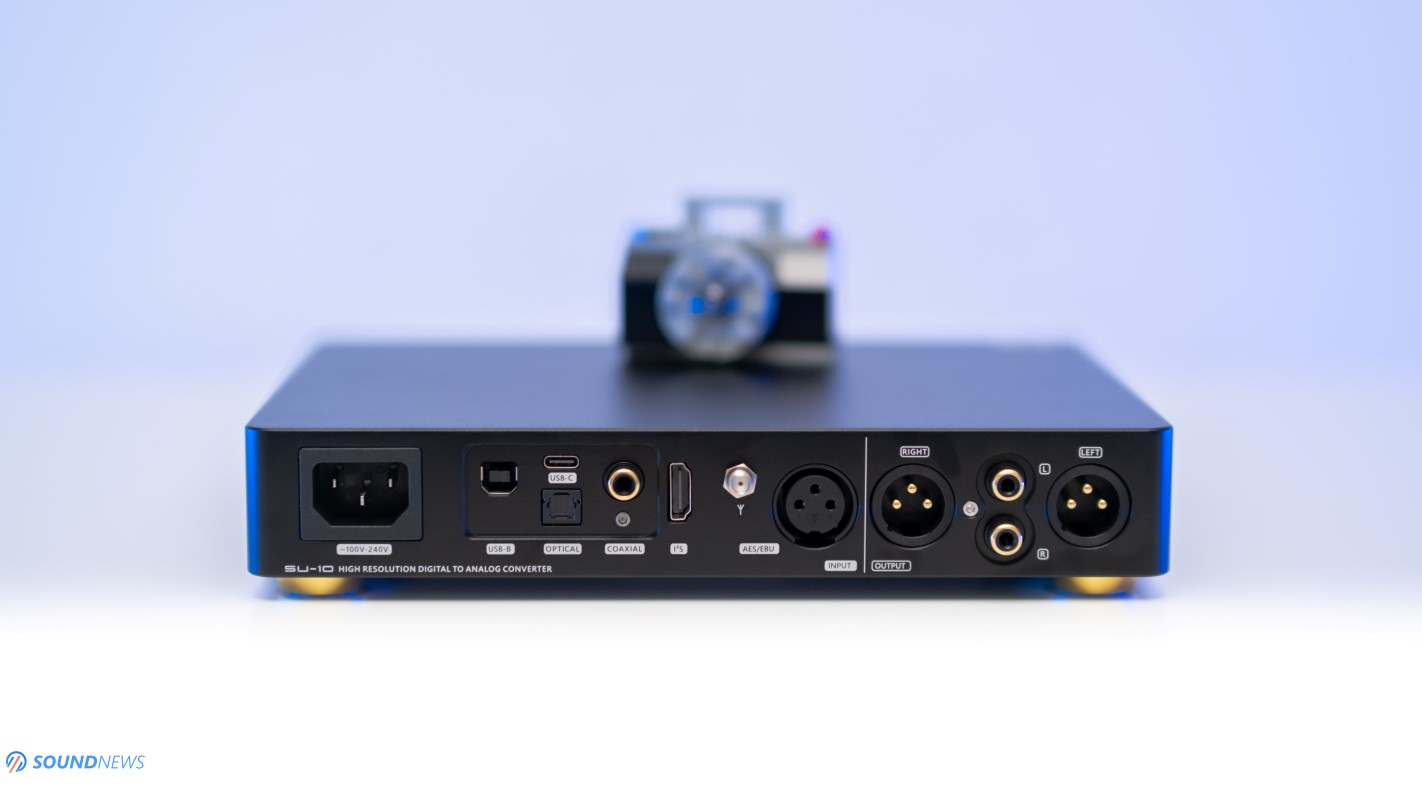
Controls & I/O
SU-10 has one of the simplest front panels I’ve encountered with digital audio. Its front panel houses a volume knob that works as a menu navigator and On/Off button, there’s a colorful LCD screen in the middle and that’s it! Its volume knob feels sturdier, it doesn’t wobble at all and it offers a decent physical resistance just in case you’ll be using it as a DAC and preamp combo near some powered loudspeakers.
On its back, all possible digital inputs are present as USB Type-B, USB Type-C, Optical, Coaxial, AES, I2S and there’s a Bluetooth antenna socket as well. You can hook it up to anything that passed a digital signal and since I’m describing a fully balanced DAC, it offers a pair of XLR and RCA outputs. Both analog outputs can be controllable or fixed, depending on the settings and you can even disable a pair if you will.
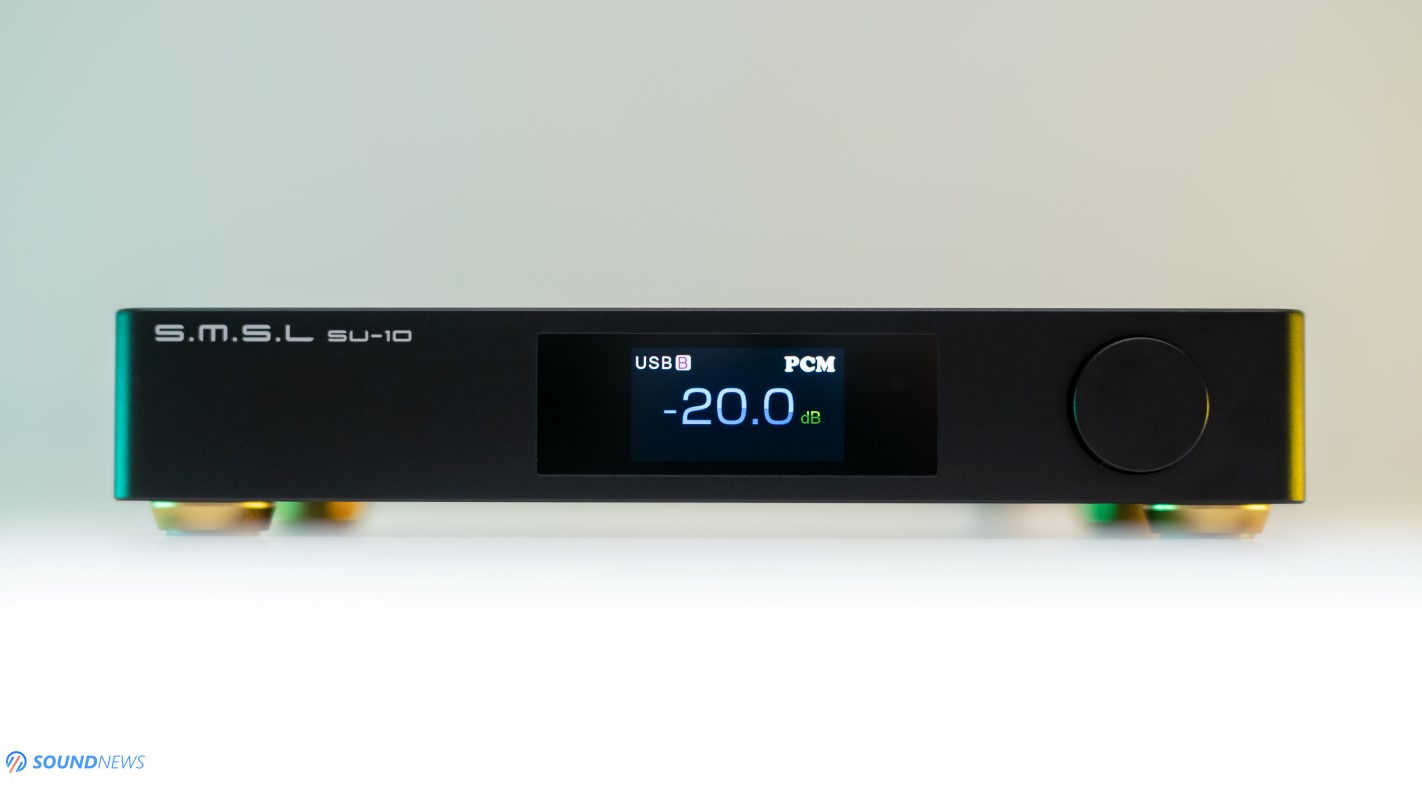
Menu Options
It has one of the most complex user interfaces I’ve seen on SMSL devices and luckily, everything can be controlled via its remote control or via its volume knob that doubles as a joystick. In the stand-by mode a single press on the knob will power on the unit and another press will enter its menu where you can play with the following settings:
- Inputs – USB Type-B, USB Type-C, Bluetooth, Optical, Coaxial, AES/EBU and I2S (HDMI)
- Outputs – All Line-Out, Balanced (XLR) or Unbalanced (RCA)
- PCM Filter – you can select a desired digital filter, built-in in the DAC chip itself. There are 7 filters to play with, but the sound difference is slight at best. I’m using Fast Linear.
- DSD Filter – 47, 50, 60 or 70 kHz Cut Off – for the most natural sound choose the first option, for the most extended sound choose the last.
- Sound Color – Standard, Rich 1,2,3, Tube 1,2,3 and Crystal 1,2,3. I’m surprised hearing a substantial difference between them. I like the standard one the most, but if you would like to alter its tonality, make it richer, softer or clearer sounding, then there are plenty of options to choose from.
- PRE Mode – Variable or Fixed. If you will be using it as a DAC only device, leave it at Fixed.
- FN key function (on its remote control) – All Outputs or Bluetooth, it’s self-explanatory
- DPLL Bandwidth – 15 positions, 5 is the default one. A lower number will provide a better jitter (noise) rejection, I left it at its default position
- I2S Mode – Normal or Reversed
- I2S DSD Channel – PCM Data or PCM LRCK. For point 9 and 10, please check its user manual if you are willing to try a few DDCs or wireless streamers via I2S input
- Dimmer – Dims its screen from 5 to 60 seconds, OFF position leaves it powered
- Brightness – 6 positions from which the lowest one is almost dimming it completely
- Reset – Goes back to factory settings
In the end, you can make it smoother or tubey sounding, or you can go with the cleanest and most detailed sound possible. It’s up to you to decide which tuning works best for you.
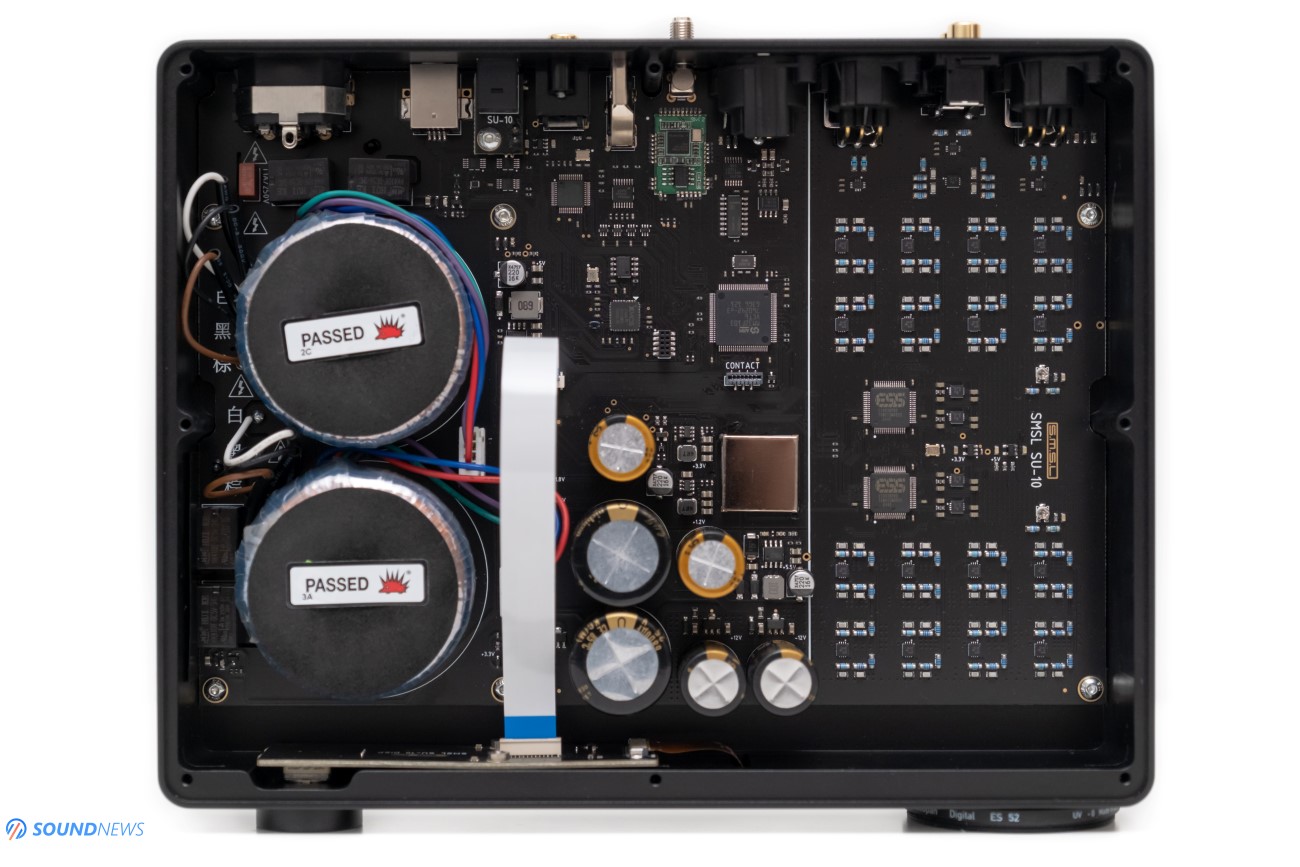
Under the Hood of SU-10
When I’m getting new toys to play with, I would always pop their hoods, as good audio starts with a good PCB design and component selection. I would follow their signal path and find some cool ideas, maybe a simplified or overkill digital/analog sections. The latest Topping units weren’t so friendly when trying to open their cases, but that’s not the case with SMSL, so I opened it up immediately.
First and foremost, high-end audio starts with an outstanding power supply design, kill the noise at the inception point, until it becomes a bigger problem down the road and that’s exactly what they have done with SU-10 . SMSL used not one, but two audio-grade linear transformers from Noratel, the same ones that are powering their $1699 VMV D2 DAC. A separate one for its analog and digital sections and that’s common practice with high-end audio applications. As a small detour, I had a single Noratel transformer in my former Matrix Audio X-Sabre PRO ($1700), I had one in the Matrix Audio Element X ($3400), I have one in a Plixir Elite BAC400 ($1600) passive power conditioner and a massive one in the Elite BAC1500 ($4000). Obviously not all transformers are made the same, but the ones sitting inside SU-10 are some of the best and you’ll see them usually in high-end electronics. DC power coming from its transformers is filtered with Nichicon KG and Muse caps and regulated with ultra-low-noise voltage regulators for the cleanest possible power for both its digital and analog sections.
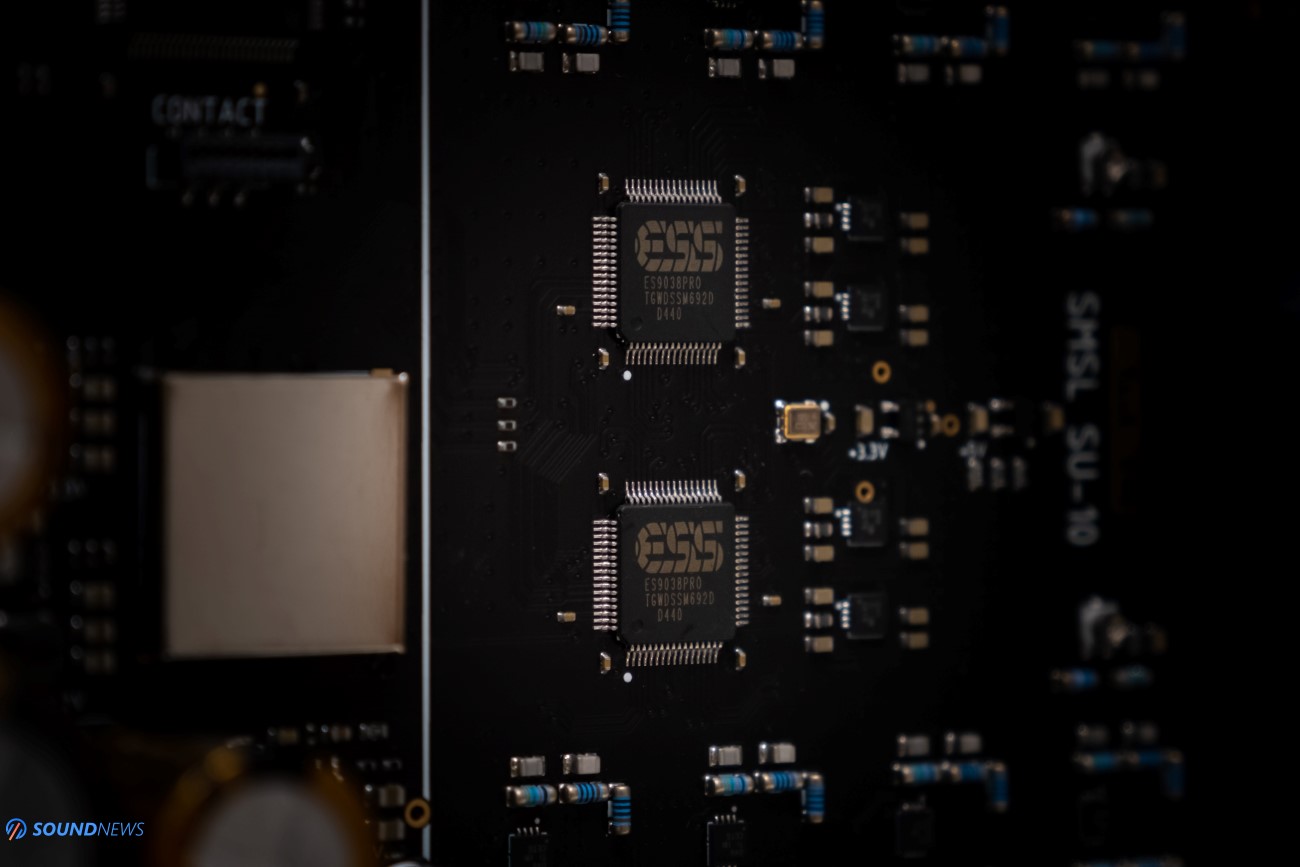
At the heart of its digital processing are staying two flagship ES9038 PRO 8-channel DAC chips of ESS Technologies. While newer ES9039 PRO chips are already on their way to audio designers around the globe, spec wise…these aren’t any better. The only difference is an included MQA decoder and a lower power consumption, meaning that both chipsets will coexist as flagship ESS-Sabre DAC chips. SMSL has a ton of experience with this exact silicon that’s already powering plenty of their devices. However, an absolute first in SMSL’s portfolio is using two DAC chips, from which all 16-channels have been used, paralleling 4 channels into a single one for a much lower harmonic distortion & channel crosstalk and for a marginally better dynamic range. SMSL never did this before…and that somehow excites me to the core.
There’s a brand new XMOS receiver released this year, the XU-316 more exactly that’s still the most powerful off-the-shelf digital receiver of today. We’re talking about a 16-core chip with up to 2400 MIPS and 1200 MFLOPS of processing power that unlocked MQA playback via its USB Type-B and Type-C inputs. SMSL went a little further and infused their own code in an ARM CPU that unlocked MQA playback on all S/PDIF inputs, including native playback for MQA-CD files.
Some of the most respectable DAC makers from China already developed their own clock management chips (see Gustard, Aune and Topping) and it seems that SMSL followed the same course of action, developing their own CK-03 clock management unit that was encapsulated in a metal enclosure for a better noise rejection and for a stable working temperature.
After years of reviewing hundreds of DACs, a world-first for me was witnessing such a powerful analog output stage, consisting of 21 operational amplifiers (OPA1612). About a third of its PCB is populated by these that were surrounded by discrete components as resistors and diodes. While I saw more impressive output stage in units like Gustard X26 PRO, R26 Discrete and in much pricier converters, I never saw anything remotely close in units costing below $1K. I’m expecting it pushing dynamics like crazy and deliver natural harmonics, usually reserved for high-end electronics.
A Qualcomm Bluetooth receiver is also on board that supports all the nicest codecs available as SBC, AAC, AptX, AptX-HD and LDAC. Its antenna works as a wireless booster and its operating distance should be around ~10 to 15 meters, depending on how many walls are in between it and the sender.
All in all, SMSL used the most impressive ESS-Sabre implementation I’ve seen thus far, as two linear transformers and a beefy output stage that should bring those chips so very close to their maximum potential. My ears are heavily itching and I’m expecting wonderful things coming out of it, so what are we waiting for? Let’s hit some eardrums!
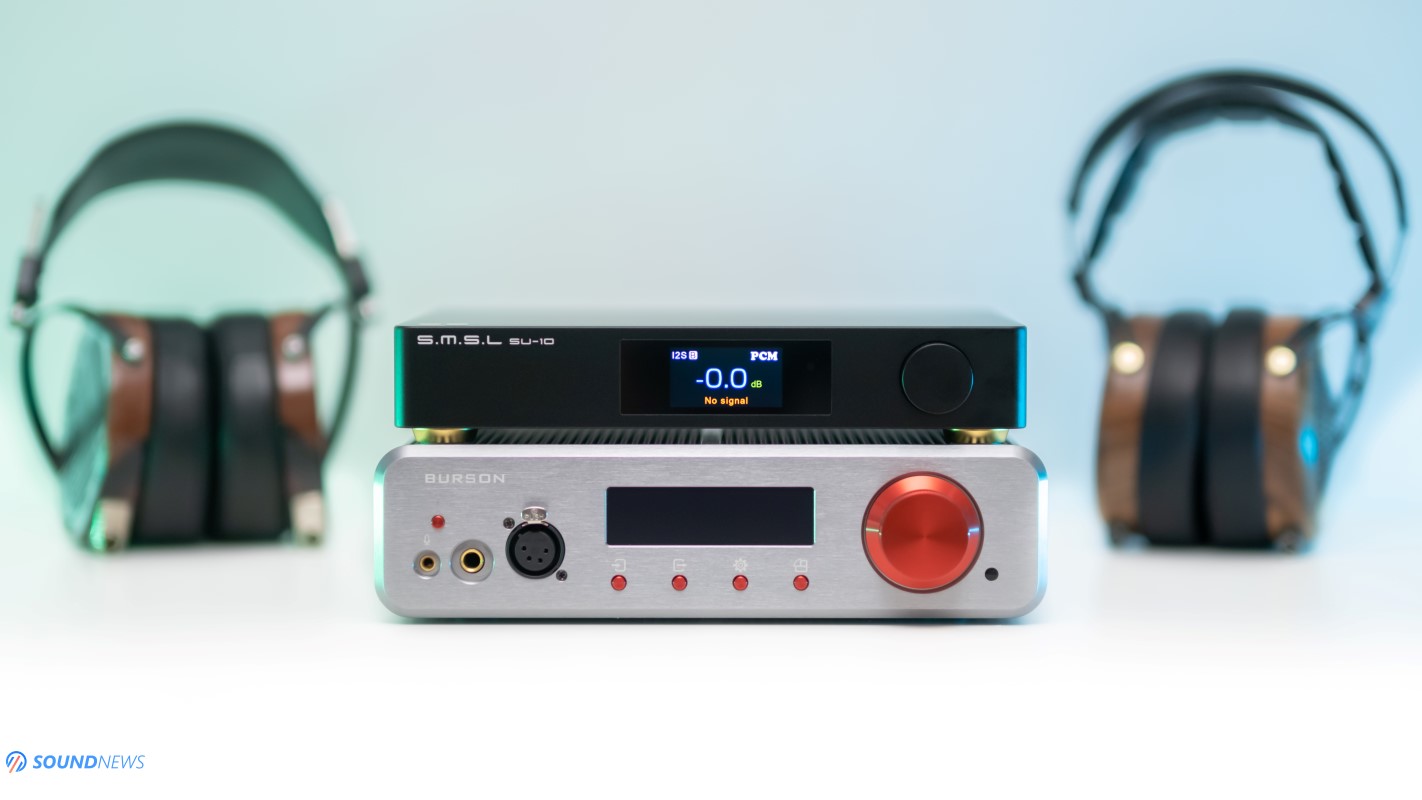
Sound Performance
I. Preliminary Impressions
Oftentimes people have strong preconceptions about certain DAC designs and about the philosophy behind them, like having off-the-shelf DAC chips with delta-sigma modulators, like having a much more complex FPGA-based conversion technique or maybe having resistor ladders that will be converting zeroes and ones into sound waves. In all honesty…I have such prejudice myself, especially when evaluating entry or mid-level converters that don’t use high-quality components. I have lower expectations about certain DAC chips put in affordable devices. When I’m going past a certain price point, where I’m no longer questioning everything that sits under their hoods, then my views are no longer kicking-in, looking at big unknowns and forgetting about the never-ending battles waging between ESS-Sabre and AKM silicon or between R-2R and chip-based designs.
Sometimes people are associating the ESS-Sabre sound with an incredibly clean ‘n highly detailed sound that lacks natural texture, without planting emotions. Sometimes that’s true, sometimes not so much and other times that would be completely wrong. Units that I’m still remembering, even years after testing them had everything, from immaculate technicalities, to excellent objective and subjective performance. While impressive on the technical level, such units were never trying to mess with natural harmonics. From the ESS-Sabre mafia, the ones that I’m still remembering as sounding exemplary, always had something in common, be them powerful output stages or some sort of audio-grade transformers. Starting with SMSL VMV D1SE, followed by the EverSolo DAC-Z8, Aune S8 and finishing with pricier converters as Gustard X26 PRO, Matrix X-Sabre PRO and Element X.
Contrary to popular beliefs, such silicon is capable of rendering human voices as close as possible to the real thing, they can put you into a relaxed state of mind, they still can put a lot of meat on the bone, especially in the midrange department and push dopamine to excess for ‘Aha’ moments. You just need to find the right unit at the right price. When I’m reviewing past one kilo-buck units, I’m becoming a lot more critical about everything that’s happening under those hoods and I’ll try to be as descriptive about their sound. However, when going below that price point, there is always a strong sensation that something will be lacking, something won’t hit its mark, be it detail retrieval, transient response, maybe sound stage, frequency response or tonality as a whole. I’m testing the little SU-10 for about two weeks now, trying all its digital inputs and I have stopped at its I2S input connected to a Singxer SU-6.
Even at this point with only a few days put on the little fellow, I can honestly tell you that below $1000, this is The Best DAC that I have experienced, regardless of technology being used. While I cannot measure its technical performance with an audio analyzer and I cannot back-up everything that I’m hearing, subjectively speaking, this is the nicest thing that happened to my stereo and headphone-based setup at that exact price point. Only after a few days of burn-in, I couldn’t refrain from smiling while listening to music via SU-10. This was by far the most detailed DAC I have experienced up until reaching units like Gustard X26 PRO and this was by far the most transparent and holographic sounding unit as well, going an extra step and trying to show a beautiful picture in from of me. It wasn’t only extra clean and highly detailed, as units at this price should be by default, this was also an emotional sounding machine that pushed and pulled dynamics in an easy way. If some of you watched my EverSolo DAC-Z8 review, which broke every bias I had about ESS-Sabre DACs, then SU-10 feels like a more technical sounding unit, while retaining all amazing skills that DAC-Z8 brought on the table.
An amazing power supply design and over-sized output stage left a huge mark on its sound performance. SU-10 wasn’t even for a microsecond dry or thin sounding, it was never inside my head even with closed-back headphones, as it was always trying to escape my head and place the sounds all around me.
You know, I’m listening to a lot of…old tunes, ranging from blues, jazz and rock and I like them not only for their liveliness and for their energy that fuels my actions, but also for their…imperfections. Their hazy and grainy nature is so unique, that soft noise coming from the needle or tape is always there – a dirty pleasure as I like to call it. Some DACs are trying to pierce the veil and bring down that softness, while others will be highlighting so much, that it becomes unbearable. I’m happy to inform that SU-10 is leaving those tunes untouched without boosting or subtracting anything. I’m getting the silky smoothness, the softness and a thin veil, without making that a burden in a revealing setup. Be them St. Louis Blues, And All That Jazz or Django Reinhardt, the soul of the music wasn’t lost in transit, as I was still gently tapping my feet while sipping from a glass.
SU-10 has all the master qualities a fine sounding DAC should have. Did I hear better sounding units at double its price? Of course! As Gustard X26 PRO is still a little better on all accounts. How about at $1000? A few units will pose a threat, like Topping D90SE, Aune S8, EverSolo DAC-Z8 and SMSL VMV D1SE…but I still feel that SU-10 sits at a higher place in my ranks, being ahead of its close competition, especially when giving life back to music.
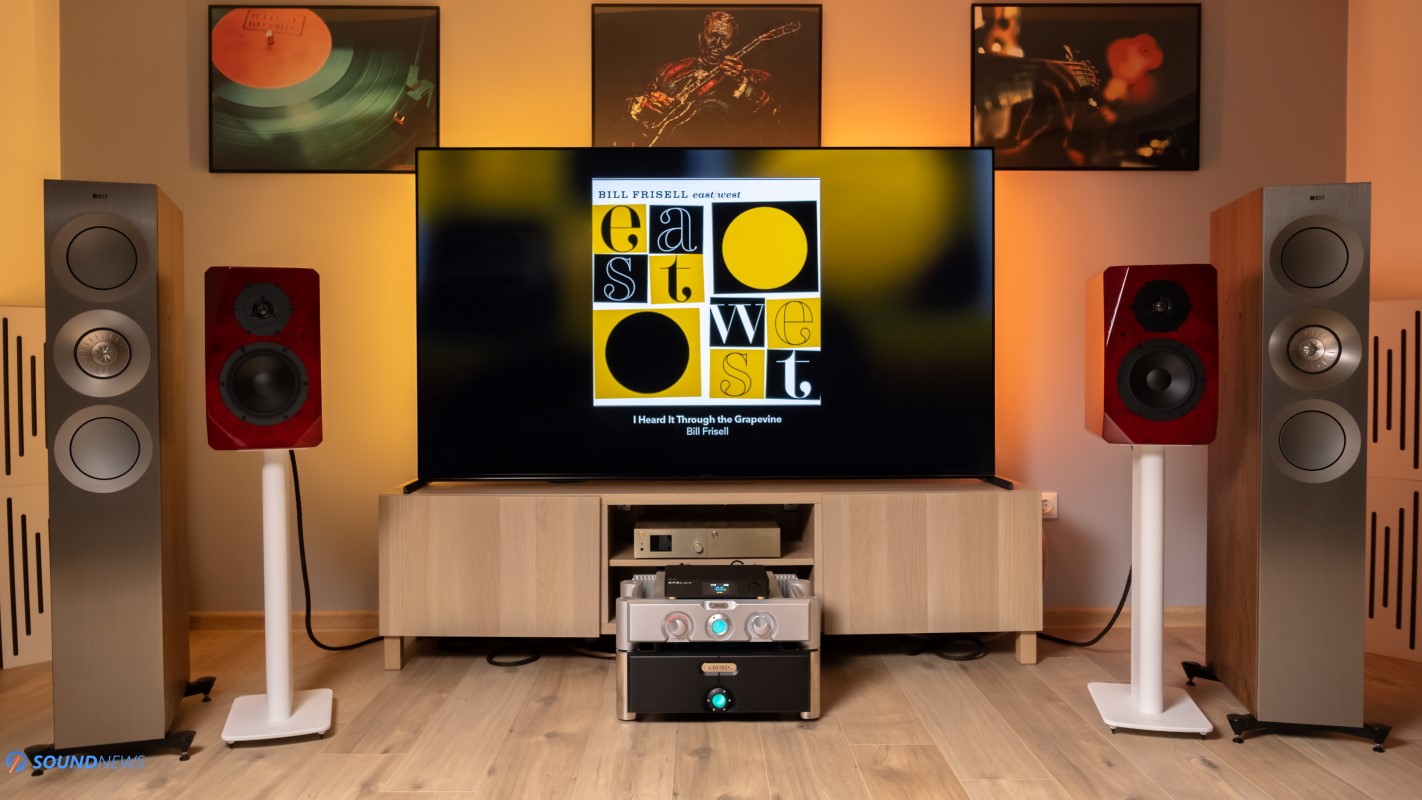
II. Using SU-10 in a Stereo setup
While SU-10 doesn’t have a dedicated line-stage and it won’t outperform a dedicated active preamplifier anytime soon, don’t forget that plenty of discrete components and 21 op-amps are still pushing dynamics up and down. It’s a thing when two op-amps are trying to push an industry standard 4V output via XLR and a different thing altogether when twenty-one op-amps are doing the same thing. SU-10 uses a digital attenuator that will lower its voltage and it can be used directly with a power amplifier in case you need it. I like that SMSL went a little over the industry standard by offering a 5.2 V output that can be beneficial for low-gain power amplifiers, like my former Benchmark AHB2. If you need a rock-steady 4V output or lower, you can lower its volume and then lock it by choosing a fixed Pre Mode.
When SU-10 replaced a Chord Dave, working as a DAC only unit, connected to a Chord Ultima 3 Pre and Ultima 5 Power, there was a small drop in terms of resolution, a slightly bigger one in terms of dynamics and a bigger one in terms of imaging (scale and depth), but I didn’t feel that a unit costing ~15 times cheaper was playing. The sound didn’t break the boundaries of my room and I was not getting that ‘behind the wall’ type of sound, but the tonality was spot on and I was getting the same amount of bass, midrange and treble energy. I found it playful and quite energetic, it was going fast and it was pounding hard with my electronica tracks. It was quite romantic sounding, gently slowing down on blues and it was adding more oomph and rumble when music was asking for it. It didn’t sound two-dimensional, as the sounds were nicely hovering around me.
When I removed the Chord Ultima 3 Preamp and let it play as a DAC and Preamp combo powering a Chord Ultima 5 power amplifier, then it no longer felt as impressive, especially in terms of dynamics and sheer scale. It felt shier by a few notches and my loudspeakers felt smaller sounding and it wasn’t filling the room with sounds to excess. What was tight, fast and impactful, became shier and less impressive on the technical level. I’m pretty sure there’s a small impedance mismatch between it and Ultima 5 or maybe that’s the way it sounds without a preamp.
Nonetheless, you can easily use it as DAC and preamp combo with powered loudspeakers or with a power amp directly, until you can get a dedicated preamp down the road. For the absolute best results, use it as a DAC only unit in a fixed volume position, where it gave everything and approached close to an end-game DAC sound wise.
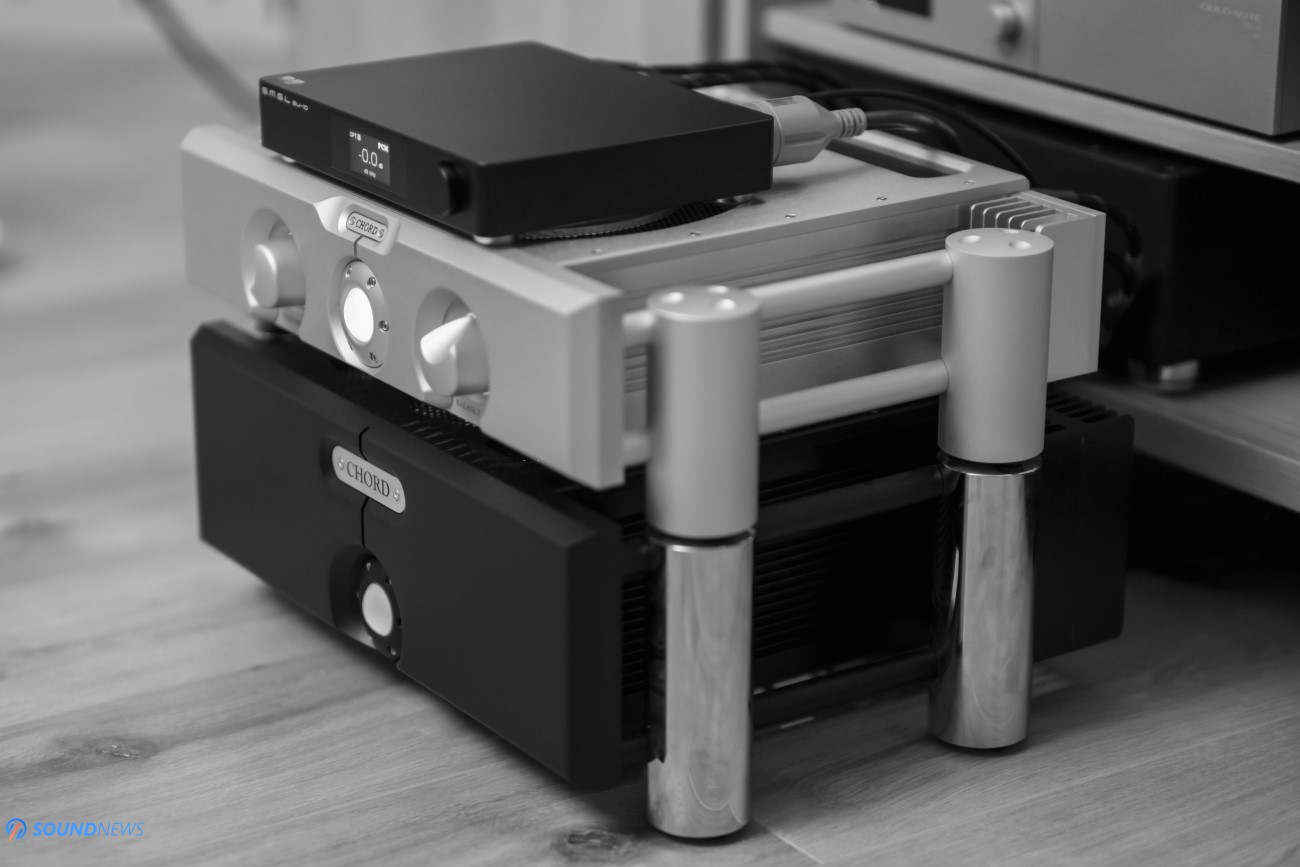
III. Detail Retrieval & Transparency
Writing about detail retrieval is almost unnecessary. This is the most impressive part about SU-10, as it obliterated every D/A converter I have experienced below $1000 mark. Maybe it’s not as mellow and silky-smooth as its bigger brother VMV D2 ($1699) was, but SU-10 felt clearer and more detailed and I found it similar to a Singxer SDA-6 PRO ($1299). SU-10 felt by a notch more resolving than VMV D1SE and I found it more impressive than Topping’s D90SE.
It will render fine details without too much trouble and you will hear that immediately, even without any burn-in. The very first thing that struck me was how shockingly resolving it was with everything I was throwing at it. If you like hearing things that you aren’t supposed to, be them mastering errors, small imperfections or beautiful intricacies, then SU-10 will render that without flexing its capacitors. This is a very detail-oriented DAC, without getting into the clinical, analytical and dry sounding territory. It never highlighted the treble output more than what it should, as it sat under a strict control, pushing detail retrieval up the ladder, while drowning brightness and treble glare for good. It indeed appeared clearer compared to units sitting at a similar price point. At first, I’ve got a feeling that there’s more energy in the treble, but after a few days of non-stop listening, I’m no longer getting that itch. There’s an outstanding extension up top, but it’s no longer bothering. Even if detail retrieval sits on a pedestal as the number one ability that SU-10 skillfully mastered, this is still…a very powerful music making machine.
After the first few days, I decided trying it via I2S being fed from a Singxer SU-6 DDC and to nobody’s surprise, what was a clear ten out of ten transparency and resolution, went up to eleven. The leading edges felt clearer as if a high-resolution mode was unlocked and the music was pouring smoother, as if a hardware up-sampler started unfolding magic tricks on me. Singxer’s SU-6 improved everything about it, but not as much as it was the case with SMSL VMV D2. I detected a sizeable improvement, but the added SQ gain wasn’t massive, already suggesting a great clock management and noise suppression mechanics at play behind SU-10’s hood.
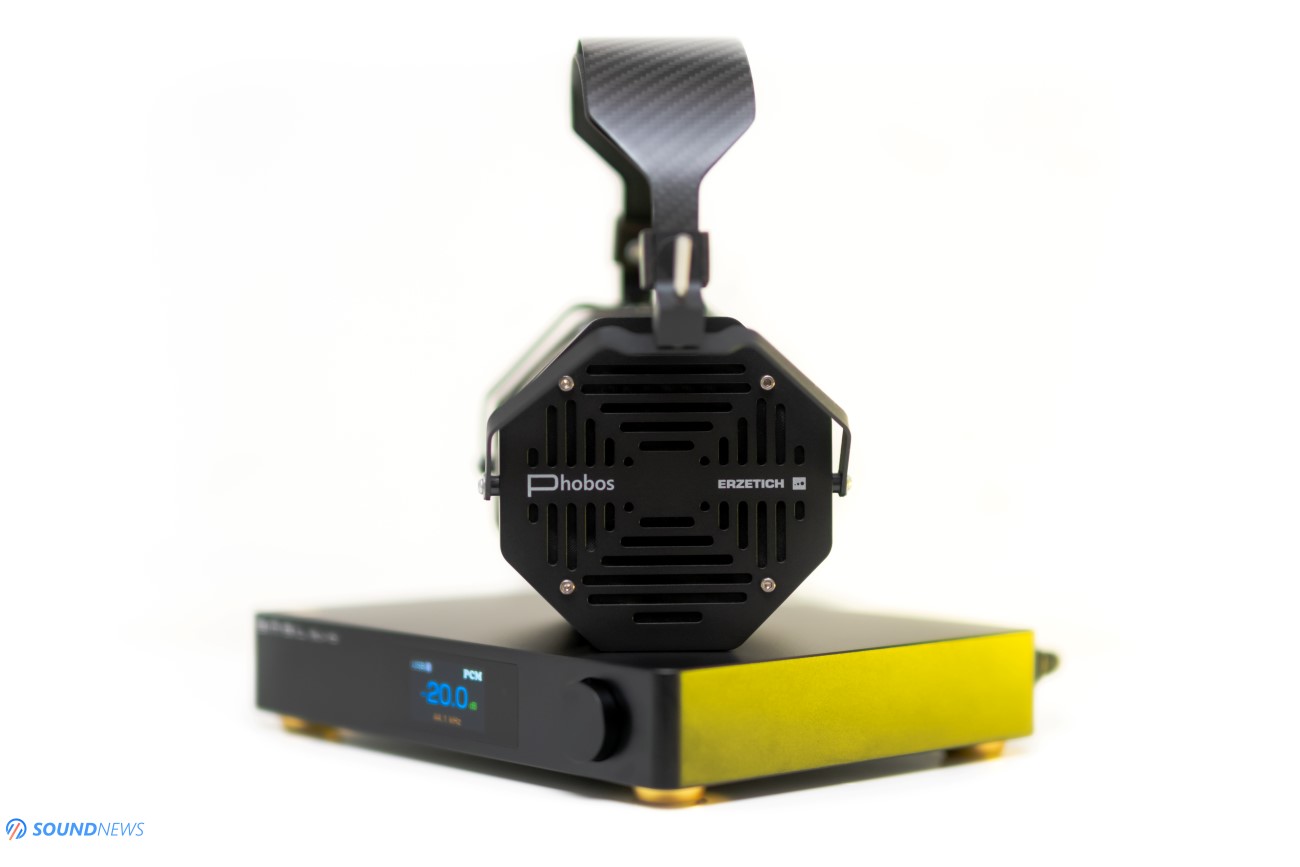
IV. Transient Response
I woke up on the sounds of Neuzeit by J. Peter Schwalm & Arve Henriksen (Qobuz / Tidal), which are still crafting one of the finest Avant-Garde Jazz out there. Around the one minute and 5 second mark, a blanket of low-intensity bass notes covered entirely my body, adding so much weight, definition and texture even at low SPL. The pace was slowly ramping up towards the end and I felt the entire room vibrating with a more energy than ever before.
Purtata by Lupii lui Calancea (Qobuz / Tidal) always works as a morale booster in the mornings, at least for me. The whole track is filled with local folk vibes that are (mostly) playing in the mid-bass and midrange region, pushing a substantial amount of air in a stereo setup, instantly pressurizing the room with punchy bass lines. Clearly, I’m dealing with a unit that can push and pull dynamics around the room like it’s a child’s play. The next track, Inimă Sălbatică from the same album is the pure definition of nasty dynamics, bass punch, weight and definition and sure enough, SU-10 was keeping its chin up, rendering all that energy without losing a single beat.
Turkish Nights by Infected Mushroom (Qobuz / Tidal) felt as fighting a professional boxing round with my arms handcuffed. As I was adding more music to the playlist, SU-10 never felt outplayed or outgunned, on the contrary…it has ahead of the game, dancing in the ring like a butterfly and hitting me all around. I experienced an exemplary transient response both in terms of speed and final kick into my eardrums. It was nimble and highly energetic and I never felt that dynamics were lowering their intensity. It didn’t matter if I was listening to gangster blues, old jazz or modern tunes, it was always pressing the gas pedal to the floor, trying to offer just a little bit more life and energy. In this regard, I find it (again) more impressive than a Topping D90SE, SMSL VMV D1SE, VMV D2 and moderately better versus a Singxer SDA-6 PRO.
As I am typing this, SU-10 appeared not only as the cleanest and most resolving DAC of SMSL, but also their most impactful and mean sounding DAC. You should hear it roar with modern tunes, especially when the pace is ramping up. There’s no way you won’t smile while on wild electronica or rock tunes as in this regard, it punches above its weight class.
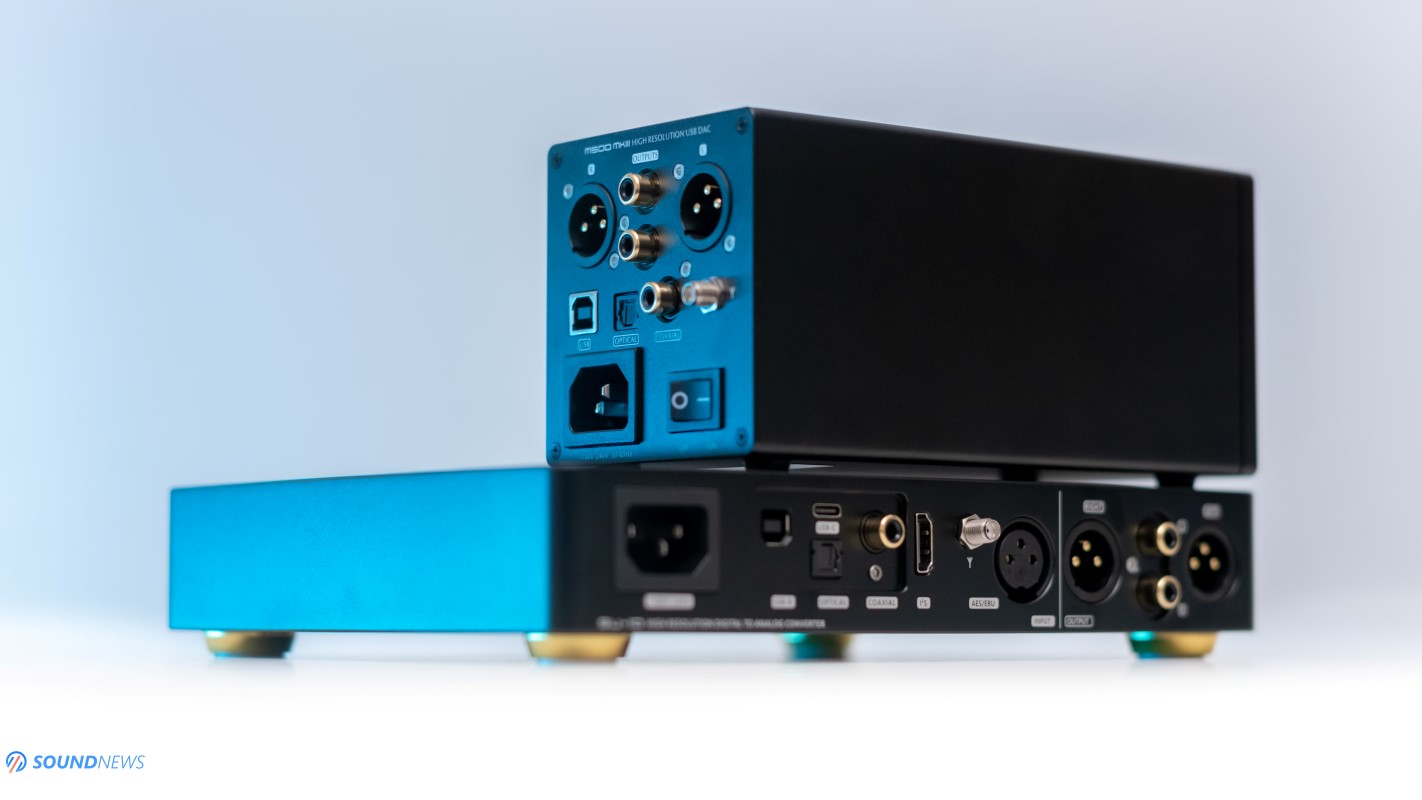
V. Imaging & Soundstage
When it comes to scale, while SMSL SU-10 won’t outplay the big boys as Gustard R26 PRO, Denafrips Terminator Plus or Chord Dave, it outplayed its close competitors once again, which I won’t mention for the third time. While it wasn’t trying hard in breaking the boundaries of my room when playing back live recording, it felt at ease, perfectly arranging the notes around me, without putting me on stage with the musicians. If we’re talking about its transient response and resolving abilities, then we got an undisputed 10 out of 10, but when it comes to scale I’m giving it a solid ~8.5 out of 10. With all that said, bigger sounding units were…physically bigger in size and considerably more expensive.
Perhaps, the most interesting part is that with SU-10 at the helm of my headphone setup, I didn’t feel this immediate urge to move back to a Gustard R26 Discrete or to a Chord DAVE, as it usually happens when I’m testing freshly released DACs. There wasn’t such a feeling, as I still find it open and quite layered sounding. Even with closed-back headphones like Kennerton Rognir planar, there was plenty of air passing by and the music wasn’t playing only on the X and Y axis as it usually happens on affordable converters. The Z axis added depth and a different meaning to my music, even without reaching for the Sennheiser HD800S or for that bigger-than-life sounding Trafomatic Primavera headamp. Since SMSL used all 16-channels of ES9038 PRO for a much lower channel crosstalk, it should be a surprise to anyone that SU-10 can portray a sizeable picture, without being hazy, thin or hollow sounding.
In the end, SU-10 didn’t provide a ‘so-so’ soundstage, but a Biggity Big one that makes you count the number of musicians playing in a messy track. Depth and imaging were even more impressive, but you were already expecting that, since the leading edges were so outlined in the first place. I could focus on anything, even with less than perfect recordings and I could follow and trace a single musician for the rest of the track without closing my eyes.

VI. Noise Floor
If you checked some of the latest developments, D/A converters aren’t increasing the noise floor anymore as it was the case a few years ago. Praise measurements and critical reviews, as current production DACs are no longer adding jitter or noise of their own. Several voltage regulation stages can be found under its hood, followed by several filtering stages that removed remaining traces of noise and as far as noise floor goes, it can’t be cleaner than that.
Putting it atop a Chord Ultima 3 Pre, followed by an Ultima 5 power amp that drove a pair of KEF Reference 3 didn’t interfere with the noise floor. I didn’t hear stutters or hisses at any volume levels. KEF’s UNI-Q coaxial drivers are prone to noise coming from downstream equipment and can pick-up residual noise with lower quality sources and/or amplifiers, but that wasn’t the case with today’s unit.
Attaching a Burson Soloist 3X and driving several pairs of desktop dynamic headphones and a few low-impedance planar-magnetic headphones didn’t ruin my listening experience, as I couldn’t detect background noises passing through. Everything felt crystal clear via headphones and loudspeakers alike. Going louder to my usual listening level didn’t add a layer of veil and everything remained under a strict control, without losing inner detail. It seems that I’m dealing with a clean sounding DAC, so no complaints in here. Considering its impressive power supply design and filtering stages, I would be surprised hearing anything less than an immaculate noise-rejection performance.
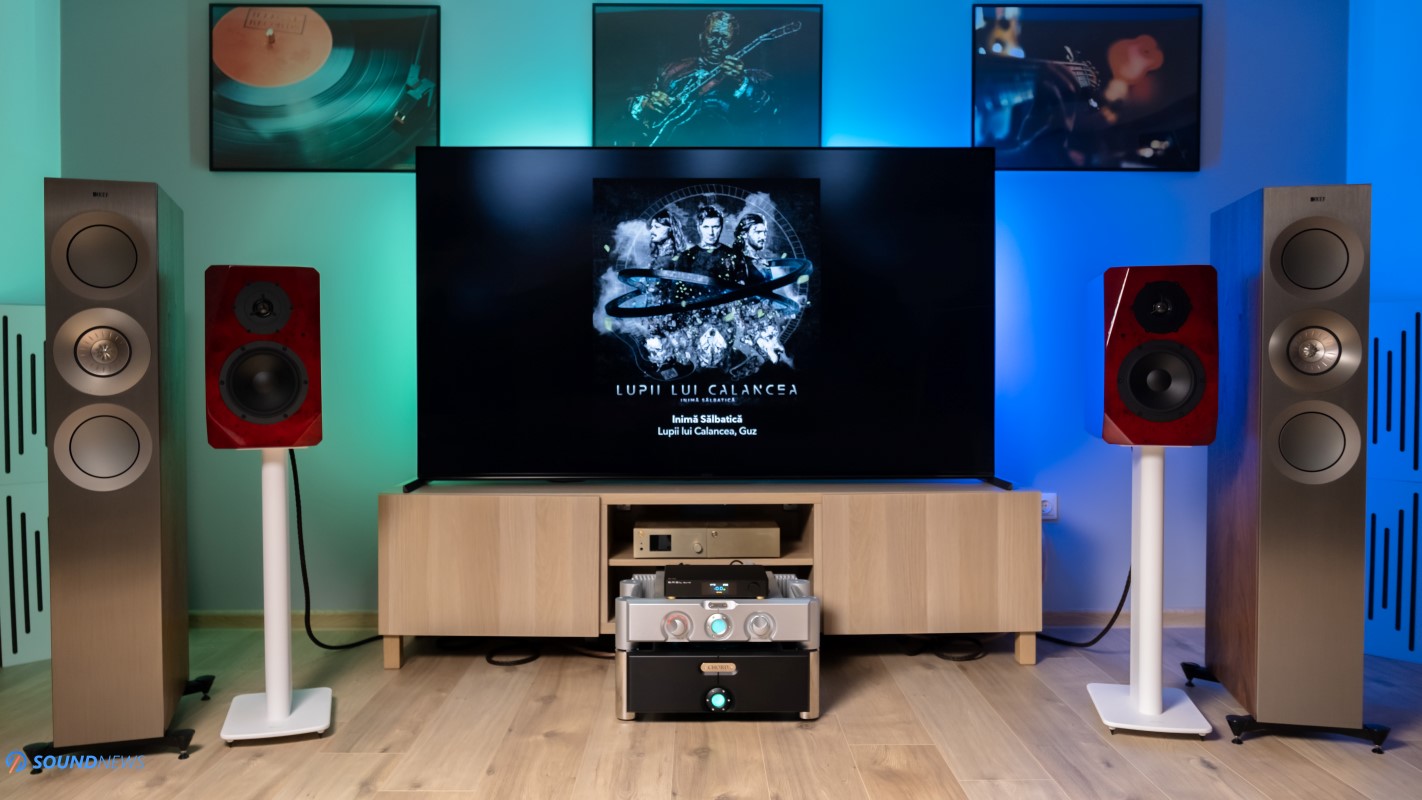
VII. Frequency Response
A. Bass
Christ on a bike! Bass-heads all around the globe rejoice, as we’re talking about a Godly bass performance. I couldn’t get enough of that fat bass via headphones or loudspeakers as it was always there smiling back at me. It was omnipresent, powerful, punchy and fast at all times. A heavy metal tune started playing and I couldn’t stop from focusing on bass guitar that felt abusive at times, asking for my full attention. Even if this is the most difficult range to render and maintain, SU-10 does bass incredibly well. It felt highly energetic and sometimes will overpower parts of the midrange. For some it might appear as bass intensive…but for me, that’s how high-end DACs are performing, as top-tier units are performing in a similar fashion. If there is a bass note hidden deep inside a crowded track, it will find, push it to the surface and highlight its inner beauty and it will sustain longer bass notes coming from a cello or organ pipe. My electronica tunes felt at home with such a unit at the helm of my stereo or headphone setup. When Hifiman Susvara hopped on my head, my ears started flapping in the air when Enleum AMP-23R or Trafomatic Primavera were driving them, although the later delivered and exceeded my wildest expectations.

B. Midrange
While far from being warm or overly smooth and romantic sounding as it might happen with a few R-2R ladder DACs, SU-10 was far away from a thin and lifeless sound of entry to mid-level converters below $1K. SU-10 won’t outplay their own VMV D2 that was exceptionally good at everything that has to do with midrange, but again, I find it fuller-bodied and livelier versus a Topping D90SE or Gustard X18. The amplifier that follows is as important as the DAC that feeds it, as in a headphone setup connected to an AMP-23R or Primavera, I’ve got one of the most beautiful midrange renditions, getting all the sweetness and warmth I could possibly desire. Voices carried plenty of emotions and it was trying to hint a life-like midrange performance without overdoing it, as R-2R ladder DACs might be doing at times. SU-10 has what I’m calling a reference midrange, by never getting dry or thin, but not exactly muscular sounding either. It’s somewhere in the middle, never trying to interfere with the tonal balance, while leaving your music untouched. Old blues still sounded spooky real and that’s all I wanted to hear from it.
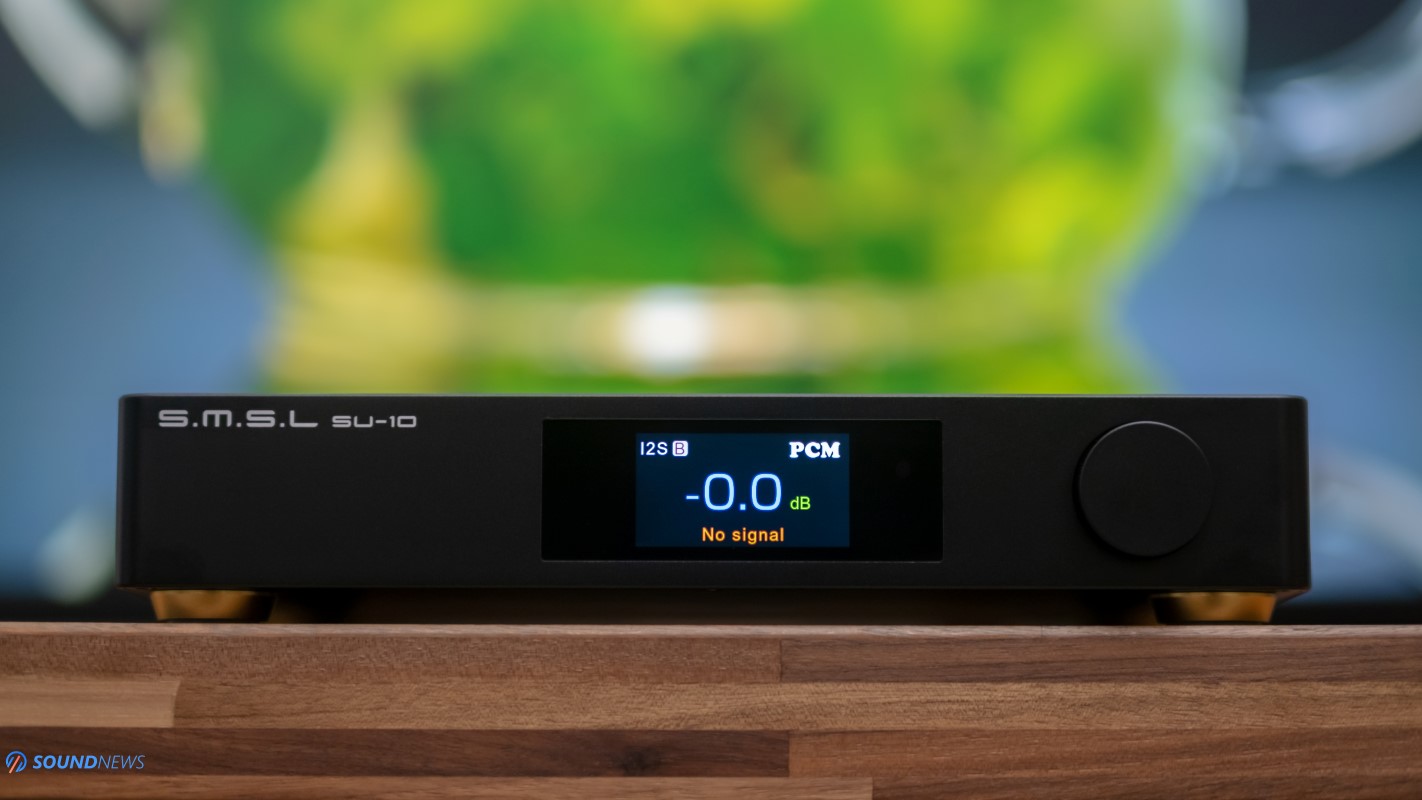
C. Treble
Another highlight was its problem-free treble performance. I scanned my playlist and on purpose, I put some of the most treble intensive tracks I have at my disposal. A few ugly metal tunes surfaced, getting raw cymbals and fast-double drums that were making me anxious. SU-10 fully rendered that dark energy and completely changed the mood for me, but it never made me lower the volume, as the cymbals didn’t go over the edge and were never artificial sounding. Forget about notions as brightness or listening fatigue, as SU-10 won’t scare you with such non-sense. How about treble definition, detail and extension? A whole lot of it and some more. Expect hearing everything that’s happening in those regions, even past top-octave…if you’re young enough. Bells and cymbals ringed nicely, without coming for another round. It didn’t add any of that nasty pre or post ringing and that’s another trait that few ESS-Sabre DACs mastered as of yet, walking towards the natural and full-bodied path, rather than the ultra-linear one. Chapeau bas, mon ami!

VIII. MQA & Bluetooth Performance
A. MQA
SU-10 is coming with a full-blown MQA decoder thanks to its XMOS XU316 that will unfold and decode MQA files natively, but wait, there is more! Instead of unfolding MQA files only via its USB inputs as most DACs are doing nowadays, SU-10 can do that even via Optical and Coaxial! A Google Chromecast can pass MQA files and after connecting the SU-10, I was pleasantly surprised that optical worked flawless with and MQA content worked as intended.
I’m no longer listening to offline music that often, as my reviews are almost exclusively made while listening to music via Qobuz or Tidal. When dealing with MQA files…technically, we’re aren’t dealing with 100% lossless files and that’s why a native 24-bit 192 kHz file played back via Qobuz will sound by a hair better, at least to me. Still, if MQA is your thing, then you should know that SU-10 locked on those files instantly and MQA logo appeared on its screen. Don’t worry if you are seeing a blue or a green dot next to the MQA logo, as in both cases it will fully unfold MQA files before playing them back natively. Before playing such files, I strongly recommend checking Pass-Through MQA in the Tidal desktop app –disabling software decoding and putting its MQA decoder to good use. Check Use Exclusive Mode and Force Maximum Volume for the best results.
Regardless if it was a USB or Optical input, it worked flawlessly with MQA files, it locked instantly on such content, playing them without issues. It will lock on by a hair faster on 44.1 kHz files due to smaller file sizes. XMOS XU-316 is currently the fastest digital receiver (2400 MIPS) for MQA content and naturally, SU-10 performed great with them. Going back and forth between software and hardware decoding, there is a clear difference that hardware decoding sounds better. If MQA playback is important to you, then SU-10 passed this test with flying colors.
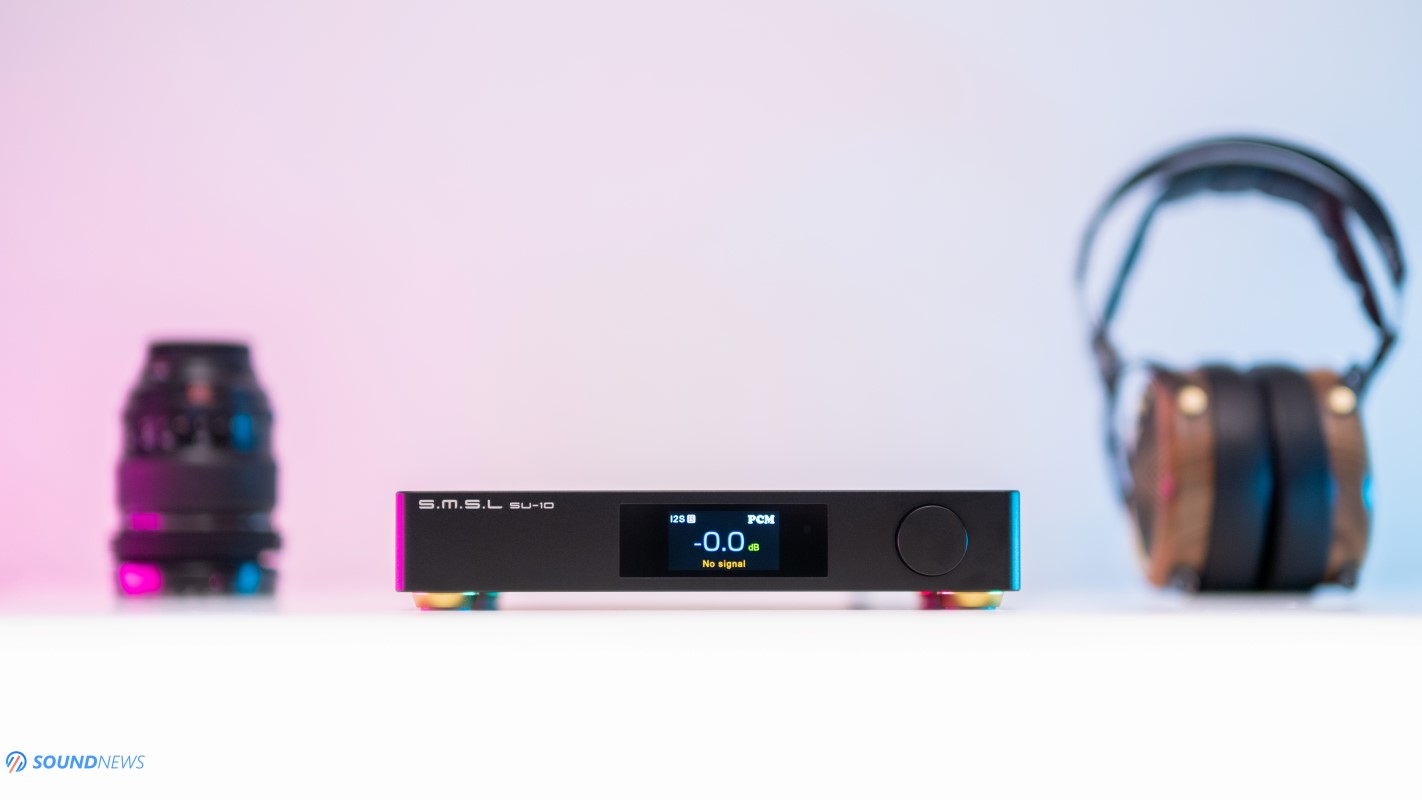
B. Bluetooth Performance
The sneaky SMSL aren’t using flagship Bluetooth receivers on all their devices, as only their flagship units are getting nicer codecs and beefier Bluetooth antennas. While I really liked the sound of their VMV D1SE, it lacked a good codec support, getting an inferior Bluetooth chipset and a mediocre Bluetooth performance. A much pricier VMV D2 got a much better BT receiver and codec support, sounding almost indistinguishable from a wired connection when playing lossless 16-bit PCM files.
I tried tens of portable and desktop DACs by now that are offering Bluetooth capabilities, but the ones that had an external antenna worked the best, never losing a beat even with two concrete walls in between the sender and the receiver. Long story short, SU-10 had a rock-solid Bluetooth performance and again two concrete walls didn’t pose a slightest problem, even from a substantial distance. Several meters away and the signal was still going strong and only when I moved to the balcony, with three concrete walls in between at around ~15 meters away, it started stuttering and losing a few beats. I tried as hard as I could in an open space, but the signal never lost a beat all thanks to a rock-solid BT connection.
Sending music from my smartphone that was connected to Qobuz and Tidal worked as a charm and LDAC codec sounded almost indistinguishable to a wired connection. Bottom line is that SU-10 worked great via Bluetooth, but it performed better with those that support BT 5.0 and LDAC codecs.

My Conclusion
When SMSL released their second generation VMV D/A converters, I immediately felt in love with them. D1SE was the very first SMSL DAC that restored my faith in SMSL, getting fresh new looks, a nicer build-quality, a broader feature set and (much) better sonics. Their pricier VMV D2 was better in several key areas, but I wasn’t the biggest fan of its slower pace and weaker resolving abilities. With SU-10, SMSL crafted a nicer sounding unit in all regards, including resolution and timing, while keeping the cost down as humanly possible.
A huge surprise was spotting two Noratel transformers and twenty-one OPA op-amps, that added a lot of energy everywhere, not only in the bass. The sound felt free and unshackled, roaming my room freely and pushing dynamics at high altitudes.
It seems that the SMSL team is more confident when trying new things, even when going past their comfort zone. This time around they didn’t overlook a thing, putting a big accent on the smallest details and on the component selection. At this price, I wouldn’t change a single thing on SU-10! Not a single capacitor, resistor or diode as they struck a perfect balance in between technicalities and musicality.
SU-10 slowly shrunk the gap between ultra-linear and emotionally impressive sounding DACs and for me, SU-10 is doing both uncommonly well. When it needs to be serious and push resolution to the surface, it will do that without breaking a sweat. When it needs to show the imperfections of century old recordings, it will do that without magnifying their imperfections. It went wild with dynamic intensive tracks and it was rich and full-bodied when asked for, something that…I will rarely say about ESS-Sabre DACs, regardless of their price.
Finally, SMSL has a winner on their hands and not a disposable hero that will be forgotten tomorrow. SU-10 felt up there with pricier converters and it approached dangerously close to what I would describe as end-game material. Besides its plasticky remote control and limited depth for a fully 3D picture, I have nothing else to complain about. This is as good as it gets up to $1K and I like it more than SMSL’s VMV D2 and Singxer’s SDA-6 PRO, approaching close to a Gustard X26 PRO performance wise. It goes without saying that it won our prestigious Gold Award and I’m looking forward to their next doings!

At $899 it already feels like the biggest bargain of the year, but if you can wait for a few more days when Black Friday sales will be kicking in, I have a strong feeling that you can get it at a nice discount. All in all, if you are hunting for a feature packed DAC that boasts MQA, Bluetooth, Sound Color options and Preamp capabilities, then I dare you find a better unit.
SMSL SU-10 was kindly provided by the fine gents of Apos Audio. It can be purchased from their web-store by following this link. (They are offering free shipping in the USA and Canada, free 45-day returns in case you don’t like it, an extra year of warranty and the lowest price guarantee). In case you’re getting one, please let me know in the comments section below. That’s all for now folks, Sandu’s singing out!
PROS:
- The best-looking SMSL DAC to date
- Outstanding fit and finish, exquisite unboxing experience
- Impressive selection of internal components
- One of the most feature packed DAC out there
- Easy to use GUI, lots of Sound Color options to choose from
- Extremely detailed and highly resolving
- Probably the fastest sounding SMSL DAC to date, very punchy sounding too
- A dynamics beast with the right downstream equipment
- Noise-free in a stereo or headphone setup, offers a black background
- Full-bodied, rich and muscular sounding
- No glare, no listening fatigue, no nothing
- Quite airy and layered sounding, even with closed-back headphones
- Impressive I/O options
- Future proof & ahead of its competition
CONS:
- Plasticky remote control
- Not as grand and holographic as pricier converters are sounding
ASSOCIATED EQUIPMENT:
- DACs: SMSL SU-10, SMSL M500 MKIII, Gustard R26 Discrete, Gustard X18, Topping D90SE, Chord Electronics DAVE, Gold Note DS-10 Plus & PSU-10 EVO
- DAPs: FiiO M17, M11 Plus ESS, Shanling M7, M6 Ultra, Hiby RS2
- Headphone Amps: Trafomatic Primavera, Trafomatic Head 2, Enleum AMP-23R, Ferrum OOR + Hypsos, Flux Lab Acoustics Volot, Burson Audio Soloist 3X GT, Topping A90 Discrete
- Preamps: Chord Electronics Ultima 3 Pre
- Integrated Amps: Enleum AMP-23R
- Power Amps: Chord Electronics Ultima 5, Burson Timekeeper 3X GT (x2)
- Loudspeakers: KEF Reference 3, Musician Knight 1, Sound Of Eden Crescendo UNO
- IEMs: FiiO FH9, FH7S, FA9, Meze Rai Penta, LittleDot Cu KIS, Kinera Skuld, 7Hz Timeless & others
- Full-sized headphones: Hifiman Susvara, HE1000SE, Audeze LCD-5, LCD-4, Sennheiser HD800S, Erzetich Phobos V2021, Erzetich Mania, Meze 109 PRO, Kennerton Rognir planar, Vali, Apos Caspian, Sendy Peacock, Apollo, HarmonicDyne Poseidon & others
- Interconnects: QED Reference (x2), Topping TCX1 (x4)
- USB Cables: Supra USB Excalibur (x2), Chord C-USB, Matrix Hi-Fi USB
- HDMI Cables: Supra 8K HDMI 2.1 (x2)
- Speaker cables: Kimber PR8, Audioquest Type4
- Power Cables: Isotek EVO3 Premier (x3), iFi Audio SupaNova (x3)
- Balanced Isolation Power Conditioners: PLiXiR Elite BAC1500 (stereo setup), Elite BAC400 (headphone setup)
